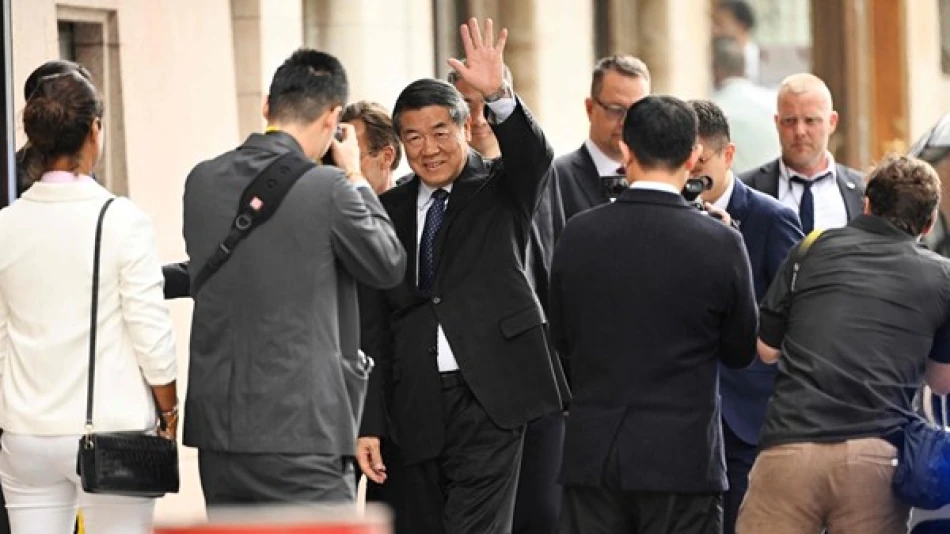
US-China Trade Talks Resume: High-Stakes Negotiations Unfold
US-China Trade Talks Resume in Stockholm as Tariff Deadline Looms
Chinese and American negotiators convened in Stockholm Monday for critical trade discussions aimed at extending a temporary ceasefire in the escalating tariff war between the world's two largest economies. With punitive duties set to reach historic highs on August 1st, both sides are racing against time to prevent further economic damage that could ripple through global markets.
High-Stakes Diplomacy in Neutral Territory
US Treasury Secretary Scott Bessent and Chinese Deputy Prime Minister He Lifeng led their respective delegations at the Rosenbad building, home to Swedish Prime Minister Ulf Kristersson's office. The choice of Stockholm as a venue underscores the delicate nature of these negotiations, with Sweden providing neutral ground away from the political pressures of Washington or Beijing.
This marks the third round of talks following sessions in Geneva in May and London in June, which successfully halted what had become a dangerous cycle of retaliatory measures. The previous negotiations established a 90-day cooling-off period that expires this week, making the Stockholm talks particularly crucial.
The Stakes: Unprecedented Tariff Levels
The numbers tell the story of how severe this trade conflict has become. Current tariffs have reached 125% on American products entering China and 145% on Chinese goods entering the US market—levels not seen since the protectionist era of the 1930s. These rates far exceed anything implemented during previous trade disputes and represent a fundamental shift in how the world's largest economies interact commercially.
President Trump's August 1st deadline for implementing additional tariffs on major trading partners has created urgency that extends beyond the US-China relationship. Other economies are watching closely, as similar measures could affect global supply chains that have taken decades to establish.
Market Implications and Investor Concerns
Financial markets have shown remarkable resilience during previous rounds of negotiations, but the current stakes are higher. The semiconductor, automotive, and agricultural sectors—which form the backbone of US-China trade—face particular uncertainty. Supply chain disruptions from prolonged tariff wars could force multinational corporations to fundamentally restructure their operations, potentially triggering inflationary pressures globally.
According to the South China Morning Post's weekend reporting, negotiators are likely to achieve another 90-day extension, suggesting both sides recognize the economic dangers of allowing the current trajectory to continue unchecked.
Historical Context: Learning from Past Trade Wars
The current dispute echoes elements of the 1980s US-Japan trade tensions, but with far greater complexity given China's role as both competitor and crucial partner in global manufacturing. Unlike previous trade disputes that focused on specific sectors, the US-China conflict touches virtually every aspect of modern commerce, from technology transfer to currency policy.
The Geneva and London talks demonstrated that despite public rhetoric, both governments understand the mutual economic destruction that unchecked tariff escalation would cause. The success of those negotiations in creating breathing room suggests pragmatic voices on both sides recognize the need for a more sustainable approach.
What Success Looks Like
A successful outcome in Stockholm would likely involve more than just extending the current truce. Negotiators are probably discussing structural mechanisms to prevent future escalations and create more predictable trading conditions. This could include regular review processes, dispute resolution frameworks, and potentially sector-specific agreements that address the most contentious issues.
For global markets, even a temporary extension would provide relief and allow businesses to plan beyond the immediate crisis. However, the underlying tensions that created this situation—technological competition, trade imbalances, and strategic rivalry—require longer-term solutions that go far beyond tariff policy.
Most Viewed News

 Layla Al Mansoori
Layla Al Mansoori






